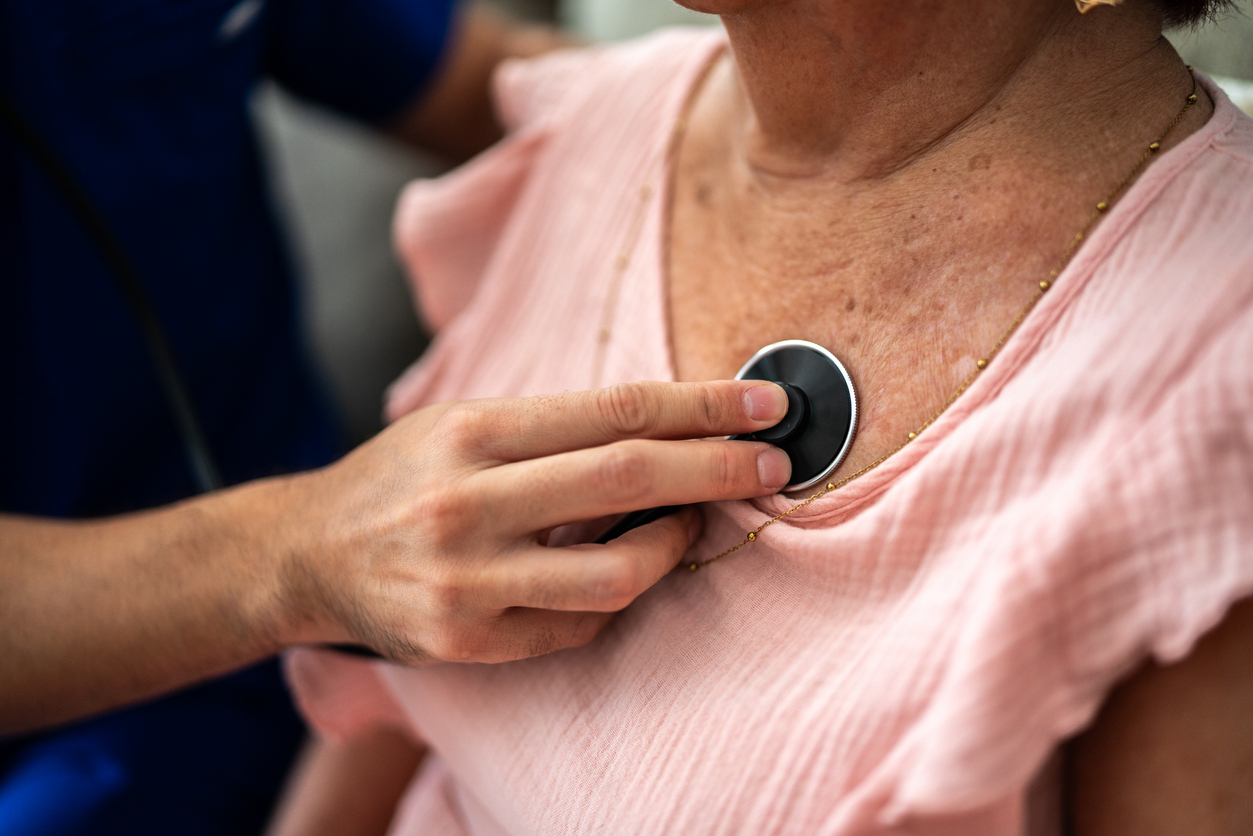
Your Health Unlocked Episodes
051: AI and the Future of Health Care – A Case Study with Sheena Franklin
September 12, 2024
---

Women’s Health FAQs
Publication Date: August 01, 2024
By: Rachel Grimsley, (RN, BSN, MSN) Volunteer Health Officer

In our Your Health Unlocked podcast episode with Martha Gulati, MD, cardiologist at Cedars-Sinai Heart Institute, we learned that women’s symptoms of heart disease and heart attack are different. We also learned that women often do not receive the same level of care for heart disease as men.
Heart disease is an umbrella term for several different diseases that can affect the heart. These can include coronary artery disease, dysrhythmias like atrial fibrillation, heart failure, and many more [3]. Coronary artery disease is the most common form of heart disease and the number one cause of death for women with heart disease [3]. Coronary artery disease develops when plaques build up in the walls of the arteries that feed that heart muscle, pinching off the blood flow to the heart.
Heart disease may go unnoticed or without symptoms until it reaches a point that it causes symptoms. Symptoms that can appear may include fatigue, shortness of breath, and exercise intolerance. When heart disease turns into a heart attack (acute coronary syndrome or myocardial infarction) is when additional symptoms start.
When you think of a heart attack, you may picture a man clutching his chest or grabbing his arm. What do you picture for women?
Ninety percent of the time men and women experience chest pain or chest pressure when having a heart attack [2]. In addition to chest pain, women often have three or more accompanying symptoms including [1,2]:
These symptoms might overshadow the initial chest pain, making it more difficult to diagnose women, or leading to medical bias to not look for heart disease in women.
The standard of care for heart disease and heart attack is the same for men and women. Treatment involves taking medications to lower cholesterol, adjusting your diet to be heart healthy, and increasing exercise. You may also have specific tests done, including blood work, checking your blood pressure, an electrocardiogram (ECG) or angiogram.
Sadly, in Dr. Gulati’s experience as a cardiologist and as the chair of the National Chest Pain Guidelines through the American College of Cardiology and the American Heart Association, women’s symptoms continue to be discounted and treatment tends to be less aggressive than for men [2].
When someone is having a heart attack and are brought to the hospital, once a heart attack is diagnosed, they are often taken straight to the cath lab, where their arteries get opened up to restore blood flow to the heart [2]. However, according to the statistics, women are less likely to be taken to the cath lab and are less likely to receive the clot buster medications that men often receive [2]. In addition, women are less likely to receive the guideline directed medical therapy that would save their life within 24 hours, often leading to readmission to the hospital after treatment. After discharge, women are less likely to be referred for cardiac rehab [2]. With women receiving subquality heart care before, during, and after it is not surprising that heart disease is the number one killer of women, but it could be prevented in many cases.
To start taking charge of your heart health today, consider Life’s Essential Eight, by the American Heart Association [4].
At the National Women’s Health Network, we believe in self-advocacy, which is why we recommend learning more about heart disease, your risks, and advocating for heart health care that aligns with the American Heart Association and the American College of Cardiology guidelines for heart care.
Women have unique risk factors for heart disease. Aside from family history, blood pressure, and cholesterol, women should also consider the following as heart disease risk factors [2]:
If you think you’re at risk of heart disease, make an appointment with your doctor and ask that your heart be checked out thoroughly and see if you can be referred to a cardiologist.
If you are having chest pains call 911 immediately, and do not try to drive yourself to the hospital. If you are having a heart attack, you could lose consciousness while driving, which could lead to an accident or you not getting to the hospital to save your life.
Sources
[1] Gulati, M. (2021, November 7). Chest pain guidelines. https://drmarthagulati.com/martha-moments/f/chest-pain-guidelines
[2] Scheiber, A. (Host). (2024, February 22). Women’s heart health with Dr. Gulati (39) [Audio podcast episode]. In Your Health Unlocked. National Women’s Health Network. https://nwhn.org/yourhealthunlocked-039/
[3] Centers for Disease Control and Prevention. (2024, January 9). Women and heart disease. CDC. https://www.cdc.gov/heartdisease/women.htm
[4] American Heart Association. (n.d.). Life’s essential 8. AHA. https://www.heart.org/en/healthy-living/healthy-lifestyle/lifes-essential-8 [/vc_toggle]
The information on this site is not intended or implied to be a substitute for professional medical advice, diagnosis, or treatment. All content, including text, graphics, images, and information, contained on or available through this website is for general information purposes only.
The continued availability of external resources is outside of the NWHN’s control. If the link you are looking for is broken, contact us at [email protected] to request more current citation information.
